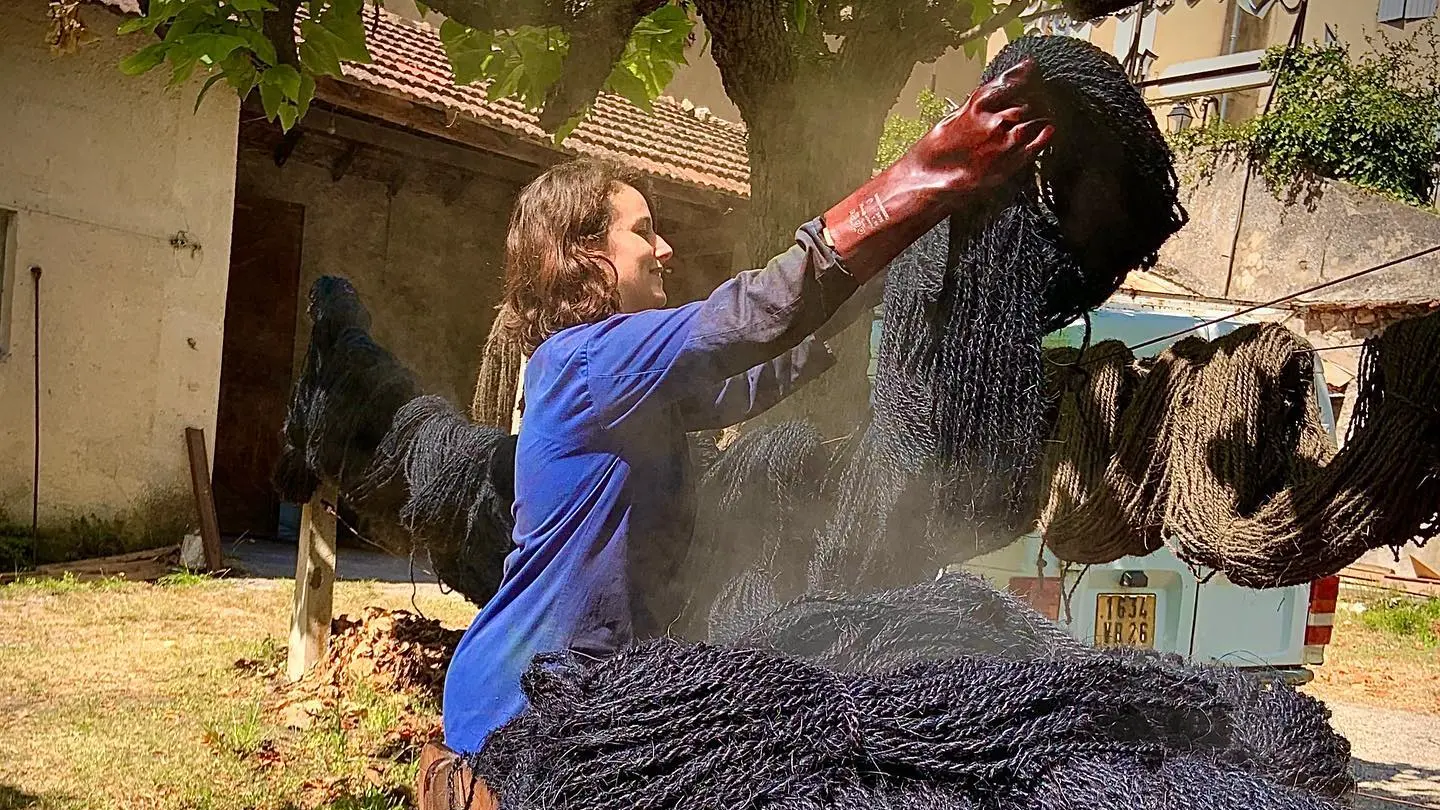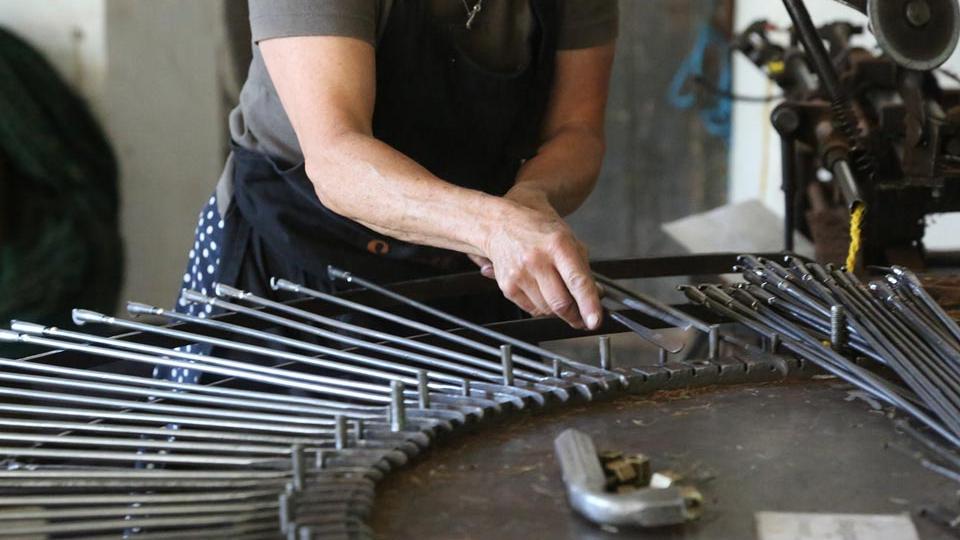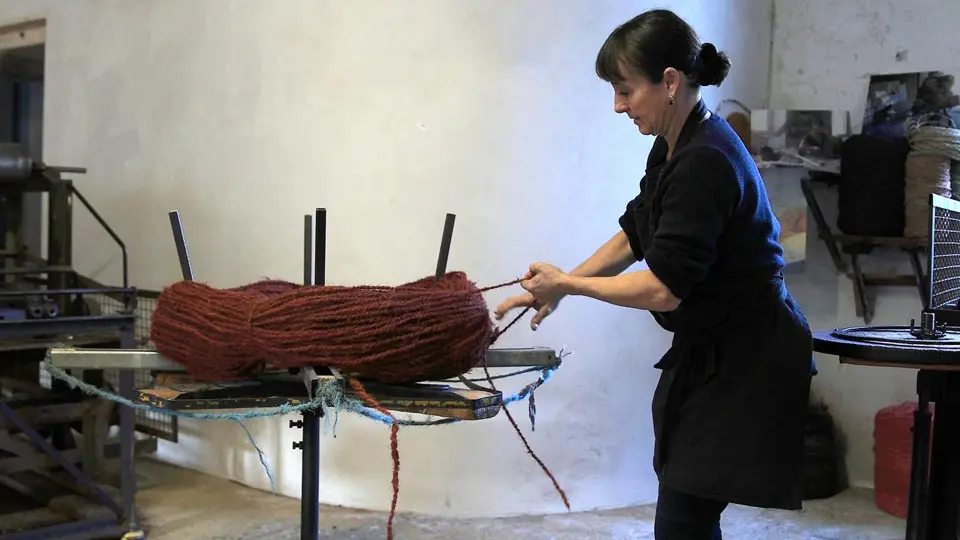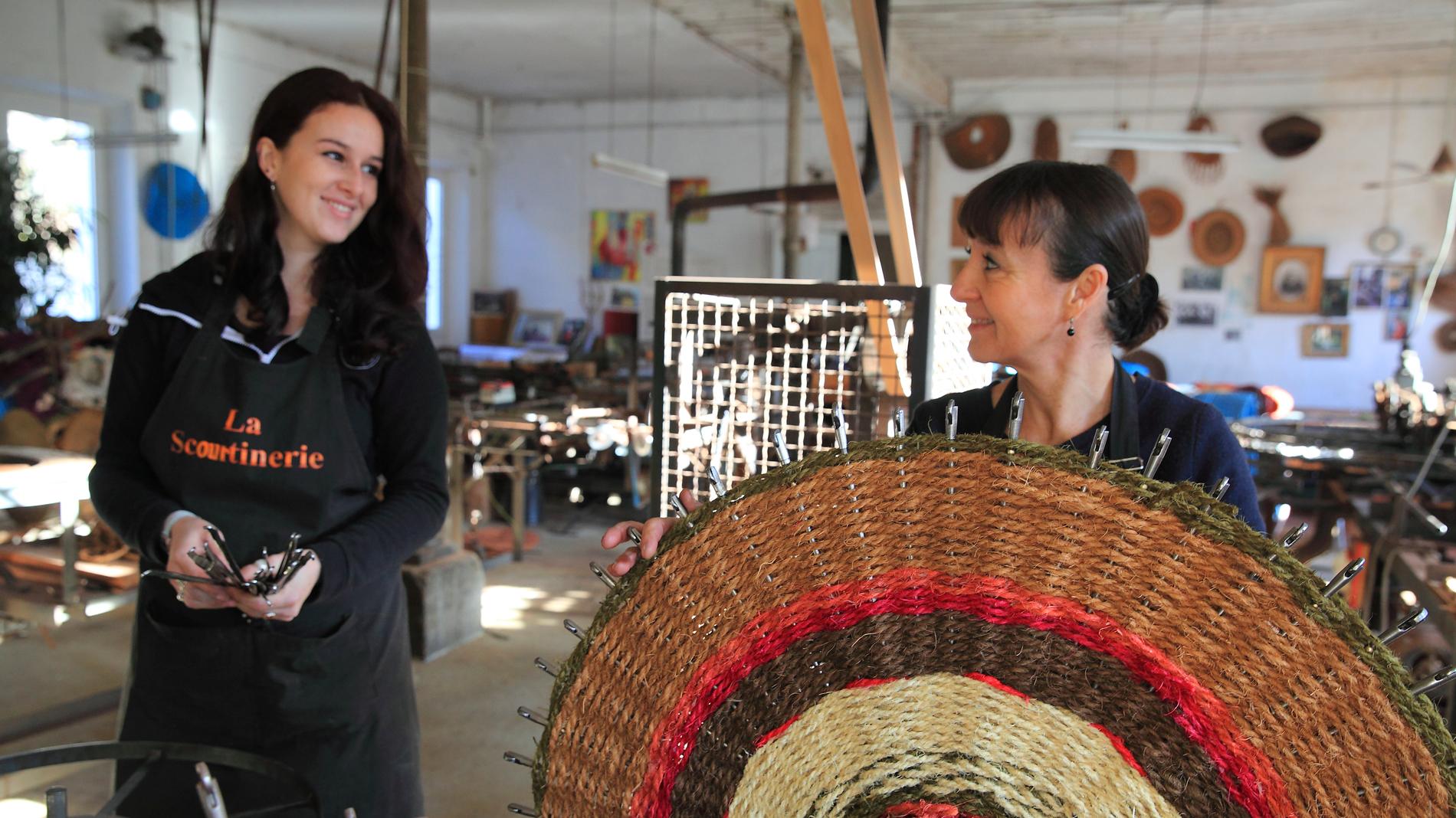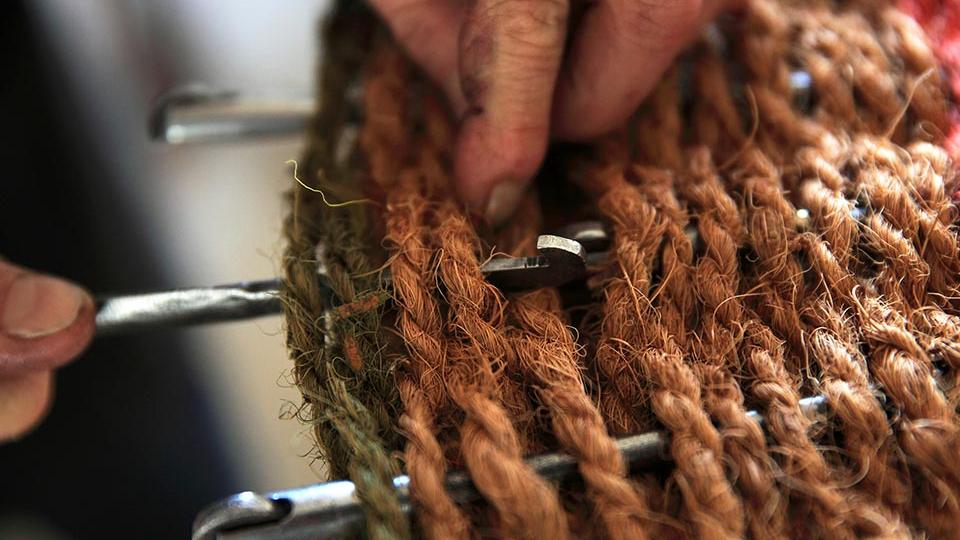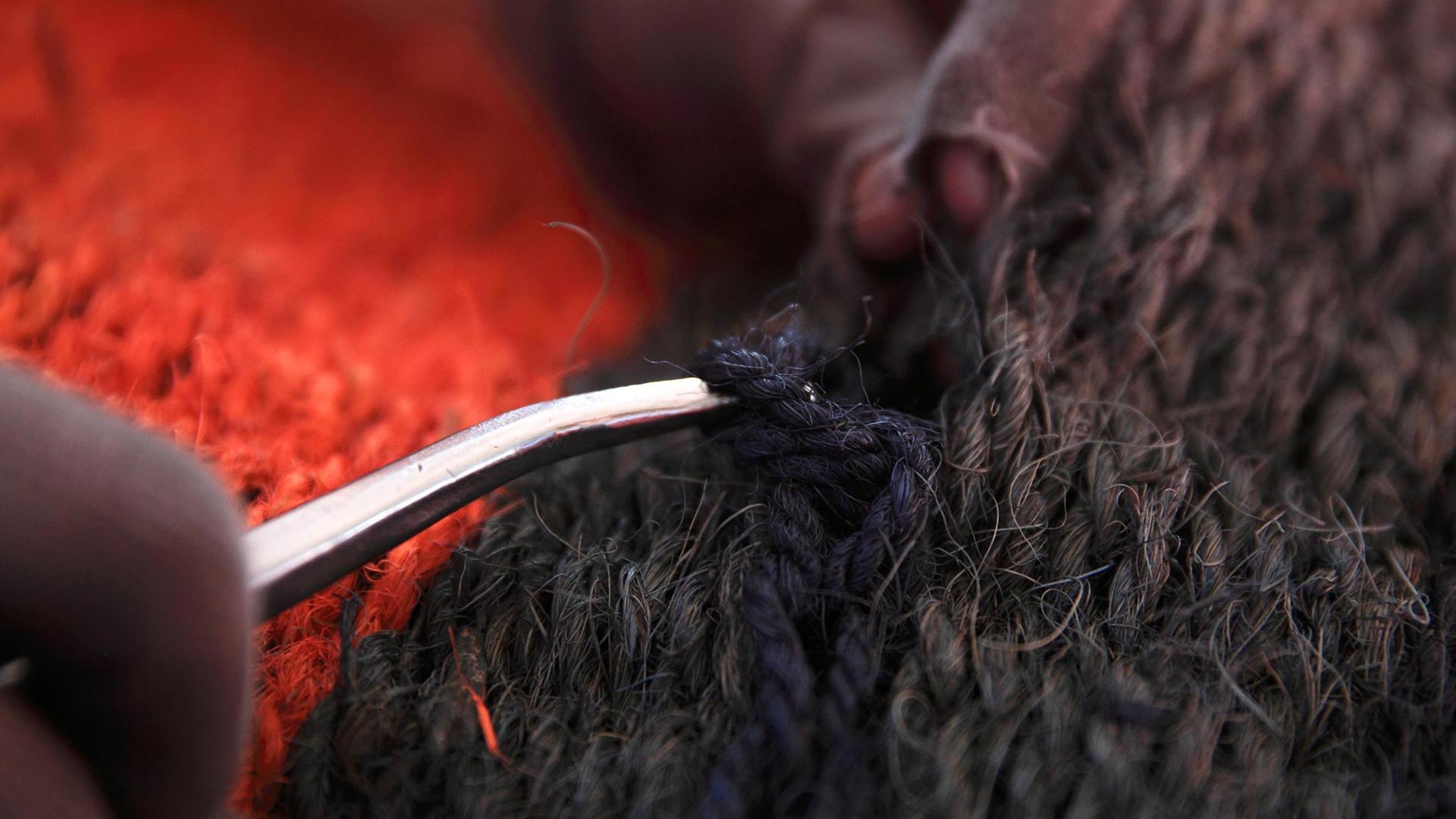The Workshop
L’atelier de tissage de la Scourtinerie, ce sont 11 machines, toutes conçues par la famille Fert, et dont la plus ancienne encore en activité date de 1900. La plus récente date quant à elle des années 1960.
The machines, connected by large shafts and belts, were powered by the water from the canal until 1954.
In the workshop, there are also 4 Scourtin artisans who weave daily and finish by hand the Scourtins that will be sold either on-site in the shop or shipped to Europe and around the world.
And the company is not about to stop anytime soon; Sophie, the great-great-granddaughter of the founder, joined the team in 2014, ensuring the succession of this unique artisanal workshop in France.
Visit the Workshop
Throughout the year, the workshop is open for free self-guided visits during the shop and museum opening hours.
Guided tours
From September to May, Monday to Friday, from 9:00 AM to 11:00 AM and from 2:00 PM to 5:00 PM.
Workshop visits are limited to groups during the summer season (June, July, and August), negotiable based on availability.
Prices:
10 to 20 people: €5 per person
21 to 30 people: €4.50 per person
31 to 40 people: €4 per person
If there are more participants, the group must be split into two, with visits scheduled at least 30 minutes apart.
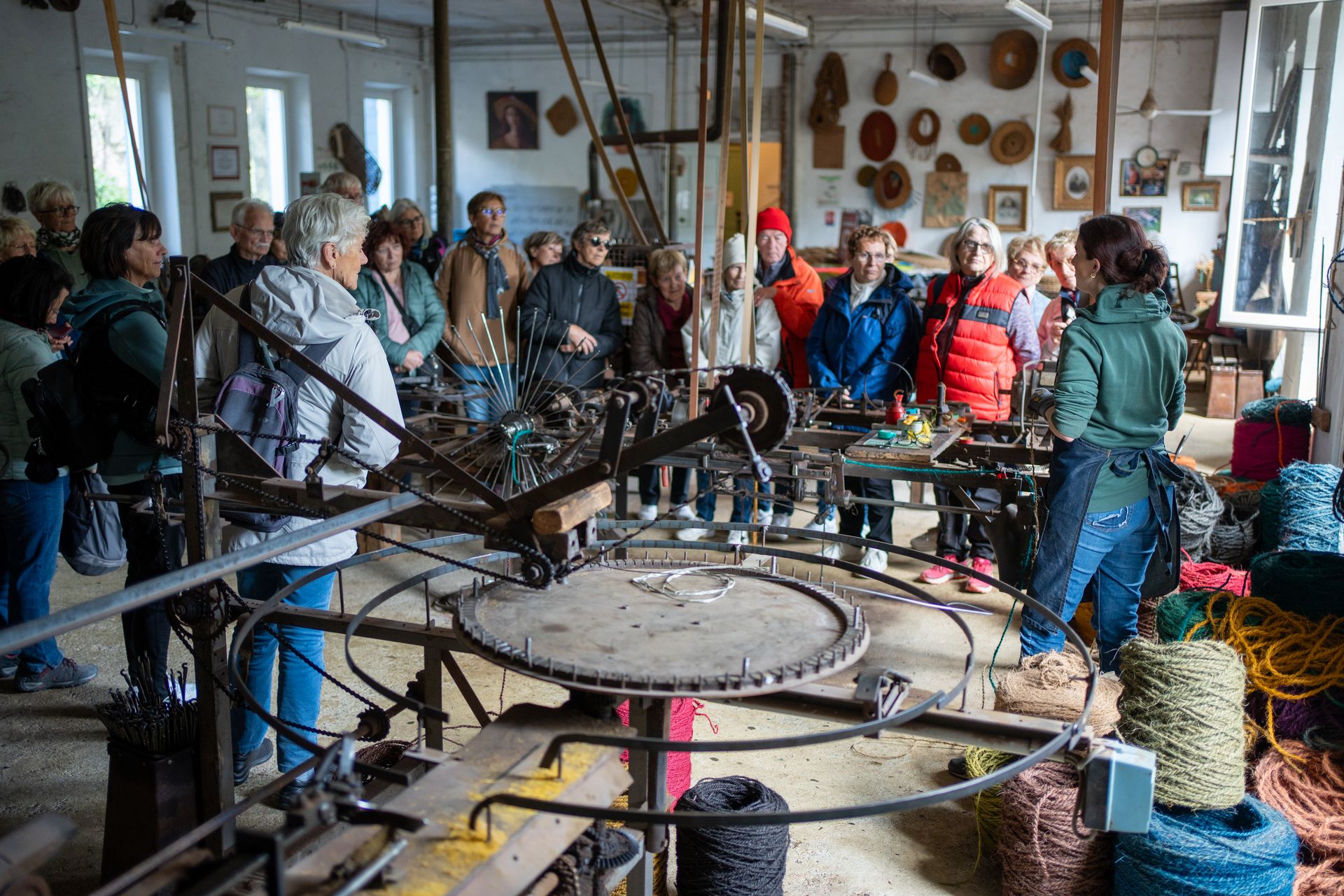
Please note: Buses cannot access the courtyard of La Scourtinerie directly. Due to limited space and the presence of other vehicles, turning around is not possible.
The Making of a Scourtin
To better prepare for your visit, we invite you to discover the steps involved in making a Scourtin below.
1
Dyeing
The coconut fiber skeins are dyed on-site in a range of 15 colors. Frédérique hangs them in the courtyard of La Scourtinerie, then stores them in a building next to the workshop, sorting them by color.
2
Installing the Needles
The steel pins are fixed onto a wheel, in an odd number, to weave the weft of the Scourtin.
3
Winding the Skeins
For generations, the Fert family has sourced coconut fiber rope from the state of Kerala, in southern India. This rope is hand-spun and selected for its high quality. In the workshop, it is wound into spools to make it easier to handle for weaving.
4
Weaving
The process begins by hand before electricity takes over. The loom creates the weft accompanied by the regular clicking sound of the working pins. Depending on the inspiration or the order, the weaving can be either solid or multicolored, with the weaver alternating spools of thread to create different patterns.
5
Removing the Needles
While reinforcing the weave, the machine called the “tireuse” removes the pins, which are then replaced by the warp thread through this action.
This is the final step where a machine assists the manual work.
6
Manual Finishing
To finish the Scourtin, there is no machine, only the skilled hands of the Scourtiniers. The center of the rug is completed using hooks and needles. This step allows the Scourtin to retain its traditional round shape or be shaped into an oval by working the center of the rug from right to left with the hook.
1
Dyeing
The coconut fiber skeins are dyed on-site in a range of 15 colors. Frédérique hangs them in the courtyard of La Scourtinerie, then stores them in a building next to the workshop, sorting them by color.
2
Installing the Needles
The steel pins are fixed onto a wheel, in an odd number, to weave the weft of the Scourtin.
3
Winding the Skeins
For generations, the Fert family has sourced coconut fiber rope from the state of Kerala, in southern India. This rope is hand-spun and selected for its high quality. In the workshop, it is wound into spools to make it easier to handle for weaving.
4
Weaving
The process begins by hand before electricity takes over. The loom creates the weft accompanied by the regular clicking sound of the working pins. Depending on the inspiration or the order, the weaving can be either solid or multicolored, with the weaver alternating spools of thread to create different patterns.
5
Removing the Needles
While reinforcing the weave, the machine called the “tireuse” removes the pins, which are then replaced by the warp thread through this action.
This is the final step where a machine assists the manual work.
6
Manual Finishing
To finish the Scourtin, there is no machine, only the skilled hands of the Scourtiniers. The center of the rug is completed using hooks and needles. This step allows the Scourtin to retain its traditional round shape or be shaped into an oval by working the center of the rug from right to left with the hook.
FRENCH COMPANY

LIVING HERITAGE COMPANY

ANCESTRAL KNOW-HOW

NATURAL AND SUSTAINABLE RESOURCE

FRENCH COMPANY

LIVING HERITAGE COMPANY

ANCESTRAL KNOW-HOW

NATURAL AND SUSTAINABLE RESOURCE
